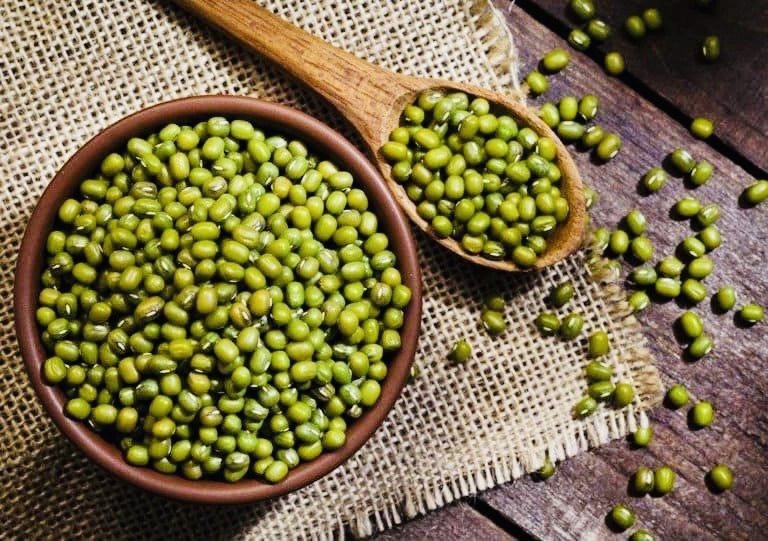Faba bean
The faba bean (Vicia faba) is a member of the Fabaceae (bean) family and is also known as the broad bean, fava bean, tickbean, bell bean, field bean or horse bean. The faba bean is native to northern Africa and south western Asia, but is now cultivated throughout the world.
Overview
Faba bean production in Australia first began in the 1980s in South Australia and is now cultivated primarily in Victoria, South Australia, New South Wales and Western Australia with some small production in Tasmania and southern Queensland. In Australia, faba beans are a cool season crop, sown in autumn and harvested in late spring to early summer.
As a legume, faba beans fix nitrogen in the soil and so can be used as a break crop in cereal cropping or cotton to improve crop performance. Farmers generally grow faba beans as a rotational crop rather than as their primary crop to provide cash flow, as a break crop or as a green manure crop to improve degraded soil.
The species Vicia faba, is categorised into the various commonly known names mainly by size. Smaller seed types (Vicia faba var. minor) are generally referred to as faba beans or tickbeans and are used for both human consumption and animal feed. Larger seed types (Vicia faba var. major) are known as broad beans and are generally dried or sold fresh for human consumption. Broad beans have a longer growing season and are better suited to higher rainfall areas (>500mm) in order to achieve the larger seed size.
Faba beans grown in Australia are produced mainly for export for human consumption. The major export market is the Middle East, where the faba bean is used as a common dietary staple. Australia competes with countries in the European Union (particularly the United Kingdom and France) for a share of this market. There is also significant demand for faba beans in China, the subcontinent, south East Asia and South America.
Faba bean production in Australia is an established industry, with a grower Research & Development (R&D) levy and strategic R&D priorities. Faba bean growers are represented by Pulse Australia.
Facts and figures
• Faba beans were first grown in Australia in the 1980s
• Faba beans, broad beans, tickbeans, field beans and horse beans are all the same species, Vicia faba, but are categorised according to size
• Faba beans are grown in Victoria, South Australia, New South Wales and Western Australia, with small crops grown in Queensland and Tasmania
• Faba beans are a cool season crop, generally sown in autumn and harvested in late spring to early summer
• Australian annual production of faba beans averages over 300,000 tonnes per annum
Production status
Faba bean is grown in Australia mainly as a break crop and opportunity cash crop. Australia produces over 300,000 tonnes of faba beans annually, but this has been growing due to increasing prices for the crop.
The majority of faba bean production is in Victoria and South Australia. This is followed by New South Wales and Western Australia and Queensland.
Uses
Faba beans are a good source of carbohydrate and protein, contain a low amount of fats and are used for both human consumption and as an animal feed.
For human consumption, faba beans are generally used dried and cooked in soups and other dishes. Chickpeas, faba beans and lentils are important foods in the Middle East and staples in many south and south-eastern Asian diets.
Faba beans can be incorporated into feed for livestock to complement other feed rations in both intensive feedlots and in paddock feeding. Faba beans are used extensively overseas as an animal feed. In Australia, the bean crop stubble is used for grazing livestock where spilt or dropped grain is a valuable feed source to livestock.
Aside from the production of faba beans as a food crop, Australian farmers will grow this crop for its soil health benefits. The decision to grow a faba bean crop is generally for one or more of the following reasons:
• To provide cash flow through the sale of the coarse, dry grains produced by the crop.
• To act as a break crop in a cereal or cotton cropping rotation to alleviate disease issues and, being a legume, to put nitrogen back into the soil.
• To be worked back into the soil as a green manure crop, particularly where a soil has been degraded in terms of organic matter or nutrients.
Uses
Faba beans are a good source of carbohydrate and protein, contain a low amount of fats and are used for both human consumption and as an animal feed.
For human consumption, faba beans are generally used dried and cooked in soups and other dishes. Chickpeas, faba beans and lentils are important foods in the Middle East and staples in many south and south-eastern Asian diets.
Faba beans can be incorporated into feed for livestock to complement other feed rations in both intensive feedlots and in paddock feeding. Faba beans are used extensively overseas as an animal feed. In Australia, the bean crop stubble is used for grazing livestock where spilt or dropped grain is a valuable feed source to livestock.
Aside from the production of faba beans as a food crop, Australian farmers will grow this crop for its soil health benefits. The decision to grow a faba bean crop is generally for one or more of the following reasons:
• To provide cash flow through the sale of the coarse, dry grains produced by the crop.
• To act as a break crop in a cereal or cotton cropping rotation to alleviate disease issues and, being a legume, to put nitrogen back into the soil.
• To be worked back into the soil as a green manure crop, particularly where a soil has been degraded in terms of organic matter or nutrients.
Production Requirements
Growing regions
Faba beans were first grown in the 1980s in the cropping regions of South Australia, but are now also grown in Victoria, New South Wales and Western Australia, and to a smaller extent in Tasmania and southern Queensland. They grow particularly well in higher rainfall regions and respond well to irrigation.
Soil type
Faba beans prefer deep neutral to alkaline soils (pH ranging 7.0 to 9.0) with high clay content, such as sand clay loams through to medium clays, noting a reasonable tolerance to waterlogging. Good yields have been achieved on soils with a pH as low as 4.6 as long as aluminium and manganese levels are low. However, soils with a pH lower than 5 may require an application of lime. As with all cropping, soil testing is recommended to determine the soil nutrient profile prior to planting.
Faba beans can be grown under irrigation, particularly on heavy clays, and are more tolerant to water logging than other legumes. As faba beans have shallow roots, they can suffer some stress in soils that dry out quickly.
Climate
Faba beans require relatively mild temperatures especially at specific stages of development, and do best with average rainfalls above 400mm. The optimal temperature range for growth is 15-20°C.
Faba bean require temperatures of at least 10°C (mean daily temperature) at flowering, which is similar to field peas, lentil and lupin, but lower than the 15°C required by chickpea. High temperatures (greater than 30°C) can cause flower abortion and cause flowering to cease, even with adequate moisture.
For maximum yield, faba bean flowering should be completed by the week in which average maximum daily temperatures reach 20°C.
Although faba beans can be grown in areas with an annual rainfall below 400mm, yield may be impacted and so their viability as a profitable cash crop will be reduced. Higher rainfall regions also generally bring cooler springs than in dryer regions, which is better for plant growth.
Faba beans are quite tolerant to frosts in their vegetative stage, but frosts can cause damage during stem development, flowering and pod filling, ultimately affecting yield.
Varieties
There are a number of faba bean varieties that can be grown in Australia and variety selection will depend on location, market demands and intended end use.
Farah, Nura, Fiesta and PBA Rana varieties are suited to southern regions while Cairo, Doza and PBA Warda have been developed for the northern growing regions.
There are some small seeded varieties that have been grown in the past but market signals indicate that these varieties, like Fiord and Ascot, are no longer wanted. Mixing of these smaller seeded varieties into the now accepted larger “Fiesta grade” will downgrade the overall quality of the product.
For further detailed information on variety selection refer to the South Australia 2017 Sowing Guide.
Planting and crop management
Normal cereal sowing methods are applicable to faba beans, as long as the seed distribution system in the seeder can deal with large seed. Faba beans are sown from early April to late June, depending on location and seasonal climate. Sowing later than this can significantly reduce yield potential as flowers and pods abort if flowering is during a period of high temperatures. Sowing too early can promote disease development due to higher moisture and lower temperatures.
Planting density will vary according to variety and time of sowing. Plant populations should target 20-30 plants per square metre. This would mean a sowing rate of 150–200 kg/ha for Fiesta, Farah or Nurah with an 85% germination, but only 100–160 kg/ha of a smaller variety like Fiord. Lower seeding rates (20 plants/m2) are suggested in north-eastern Australia, but the higher seeding rates (30 plants/m2) produce the highest yields in southern and western areas. Seeds are generally sown at a depth of 25-75mm.
Prior to sowing, seeds can be inoculated and if sowing on areas that have not grown beans before, inoculation is considered cheap insurance to maximise nodulation and therefore increase nitrogen fixation. Seed should also be weighed and germination tested before sowing.
Phosphorous is generally applied at sowing at the rate of 15-20kg/ha, although understanding the available phosphorus in the soil prior to sowing will assist in determining application rates.
Faba bean have limited ability to self-pollinate and so benefit from insect pollinators (native and/or farmed bees) to maximise seed set and increase yields. If native bee numbers are insufficient, introducing bee hives at a rate of one hive per 2.5ha can significantly increase yield (by up to 40%).
If growing under irrigation, shorter irrigation schedules work better as growth and yield are maximised.
For more detailed information on planting and crop management, refer to the Victorian Department of Agriculture Agnote Growing Faba Bean; and the New South Wales Department of Primary Industries Agfacts on Faba Beans.
Weeds, pests, and diseases
Faba beans (and broad beans) have vigorous early growth and so compete well with weeds. Well managed crops are normally very clean at harvest time. However, beans should not be sown in paddocks with moderate to high levels of broad leaf weeds, as there are few chemical control options. Grass weeds can be readily controlled in beans using grass selective herbicides.
Faba beans are susceptible to Red-legged earthmite (Halotydeus destructor), Cowpea aphid (Aphis craccivora), Lucerne flea (Sminthurus viridis) and Native budworm (Heliothis punctiger). Ongoing monitoring for these pests, and spraying when detected, is recommended.
Faba beans are susceptible to a number of diseases including Ascochyta blight, chocolate spot, rust, cercospora and alternaria. Chemical treatment through spraying is available and usually required at some stage during crop management.
For further detailed information on weeds, pests and diseases, refer to the Victorian Department of Agriculture Agnote Growing Faba Bean; and the New South Wales Department of Primary Industries Agfacts on Faba Beans; and the Western Australian Department of Agriculture and Food’s page on Faba Beans.
Infrastructure Requirements
Large scale agricultural machinery, including tractors, cultivation equipment, seeder/disc drills, boom sprayers, combine harvesters (headers), chaser bins and grain trucks, will be required for a successful faba bean crop.
Some or all of the operations required to produce a faba bean crop can be carried out by contractors, which may alleviate some capital investment in the significant amount of machinery required for crop production.
Grain silos will be required if the pulse is to be stored on farm.
If growing under irrigation, laser levelled bays work well, otherwise raised beds are generally used.
Harvesting & Processing
When mature, a faba bean crop turns from yellow, to brown, to black. This is followed by leaf drop and then the crop finally looks like a field of dry sticks with black pods. At this stage the crop is ready for harvesting. In preparation for harvesting, windrowing can be used for faba beans and can give higher yields. Faba beans can also be chemically desiccated and then direct harvested as a standing crop.
Crops are harvested when the seed moisture content is below 12% as specified for grain storage. Open front headers give the best results for harvesting faba beans and harvest should begin while stems are still a slightly green colour. Harvesting beans when they are too dry can result in pod shatter. This can be reduced by harvesting when humidity is higher or during mid-morning.
A dense or early sown crop will have pods higher off the ground than a late sown or thin crop. If sowing time is late, quite often seed pods are set on stems near the soil surface, therefore the harvest comb needs to be set close to the ground to avoid grain loss.
Once harvested, faba beans can either be stored on farm (noting that beans destined for human consumption have a limited shelf life of about nine months) or sold immediately.
Markets & Marketing
When planning the sale of a faba bean crop, it is important to consider the target market, current market conditions and cash flow requirements. Farmers can sell to international markets, through licenced grain traders, or to domestic markets for human consumption and animal feed (although domestic markets are quite small).
Different export markets will have different requirements for faba bean which is generally based on grain size. For example, Saudi Arabia requires small beans, similar to Fiord, and Egypt requires medium sized beans. As such, faba beans are segregated according to size in order to meet varying market requirements.
Australia exports 95% of faba bean production through licenced grain traders, which may offer forward contracts to producers. However, faba beans are generally marketed at the time of harvest as the size and quality of the bean will determine which market/s are suitable.
To meet standards for human consumption beans must be of an acceptable colour and have minimal blemishes on the seed coat. Faba beans will discolour over time, so storage is generally not used as a marketing strategy, as is the case with lentils for example. Pulse Australia provides a visual quality chart as a guide to colour and defects in faba beans and receival and trading standards.
Risks & Regulations
Risks/challenges
As with all agricultural pursuits, risk is inherent in growing faba beans and can include:
• the crop failing to establish or mature properly due to adverse weather events, thus resulting in reduced yield and/or poor quality
• commodity prices falling during the growth period impacting on the returns projected at planting
• faba beans not reaching the quality standards required and therefore attracting lower prices
• not recouping the costs of inputs and capital invested in the crop, like fertiliser or the costs of running large equipment, if the crop fails.
Risks specifically associated with growing faba beans are access to moisture and managing pests and disease. As a dense broad leaf plant with large seeds, water requirements are significant and any reduction in access to moisture during the growing season can impact on yield. In managing pests and disease, ongoing monitoring of crops is important to be able to take immediate action.
Regulatory considerations
Apart from the regulatory considerations that apply to all Australian farms, including laws applying to chemical use and management, occupational health and safety and transport (including machinery movements and the loading/unloading of harvested grain), there are no regulations specific to faba bean operations.




